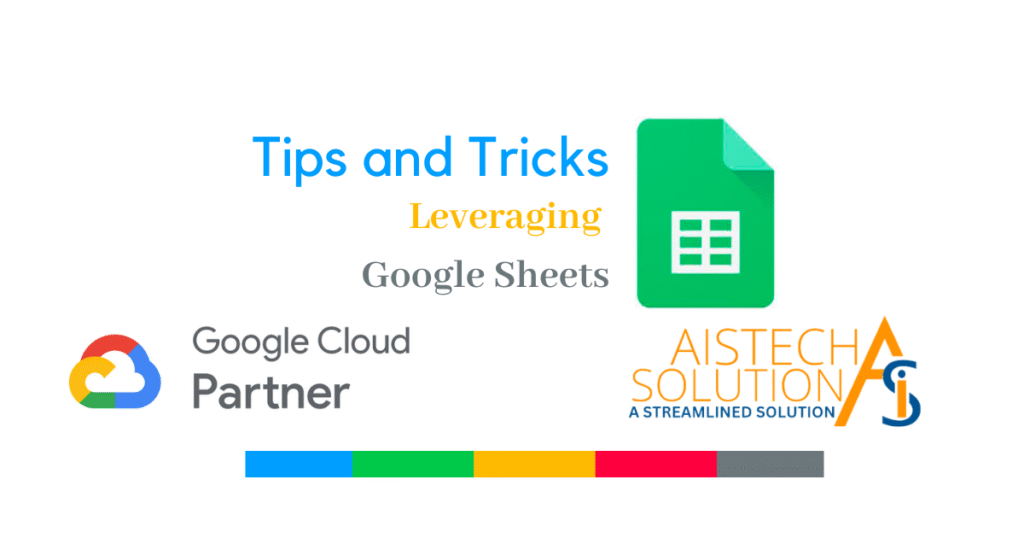I am sharing some tips & trics of Google Sheets. By leveraging these tips and tricks, you can optimize your Google Sheets experience, work more efficiently, and gain valuable insights from your data. Happy spreadsheeting! 🙂

Certainly! Here are some tips and tricks to leverage Google Sheets effectively:
- Google Sheets Shortcuts: Speed up your workflow with keyboard shortcuts. For example, Ctrl+C (Cmd+C on Mac) for copy, Ctrl+V (Cmd+V on Mac) for paste, and Ctrl+Z (Cmd+Z on Mac) for undo. Press Ctrl+/ (Cmd+/ on Mac) to view a list of available shortcuts.
- Data Validation: Ensure data accuracy by using data validation. Set rules to limit data entry to specific values or create drop-down lists. Find data validation under the “Data” menu.
- Conditional Formatting: Highlight important data with conditional formatting. Apply different formatting styles based on conditions like value ranges or text content. Access conditional formatting under “Format” > “Conditional formatting.”
- Formulas and Functions: Master essential formulas like SUM, AVERAGE, IF, and VLOOKUP. Explore the formula library (“fx” button) to find functions that suit your data analysis needs.
- Filter and Sort Data: Use filters to analyze specific data subsets easily. Go to “Data” > “Create a filter” to enable filters and sort or filter data by criteria.
- Data Import and Export: Import data from external sources like CSV files using the “Import” functions. Keep data linked and up-to-date with functions like IMPORTRANGE, IMPORTXML, or IMPORTHTML.
- Protect Sheets and Ranges: Safeguard sensitive information by protecting specific sheets or ranges. Go to “Data” > “Protect sheets and ranges” to control editing permissions.
- Data Cleanup and Splitting Cells: Use functions like TRIM and SPLIT to clean up data or separate text in cells based on delimiters.
- Array Formulas: Perform complex calculations across multiple cells using array formulas. Array formulas can save time and reduce the need for repetitive calculations.
- Named Ranges: Simplify formulas and make them more readable by using named ranges. Assign a name to a range of cells and refer to it in formulas instead of using cell references.
- Charts and Data Visualization: Create visually appealing charts and graphs to represent your data effectively. Customize the charts with various styles, colors, and labels to make them more informative.
- Protect Formulas: Prevent accidental overwriting of formulas by locking specific cells containing formulas. Select the cells, go to “Format” > “Protect sheets and ranges,” and choose the “Set Permissions” option.
- Collaboration: Share your Google Sheets with others and set their access permissions to collaborate in real time. Use comments to discuss specific cells or sections within the sheet.
- Version History: Keep track of changes made in your sheet with version history. Go to “File” > “Version history” > “See version history” to view previous versions of your sheet and restore if needed.
- Google Sheets Add-ons: Enhance Google Sheets’ functionality with add-ons from the Google Workspace Marketplace. Explore various add-ons to find tools that suit your data analysis and reporting needs.
Stay tuned for more exciting updates, tips, and tricks on how to make the most of Google Docs and other Google Workspace tools to boost your productivity and collaborate like a pro!
Take the first step and Contact us now. We will help you to get the most out from Google Workspace.
